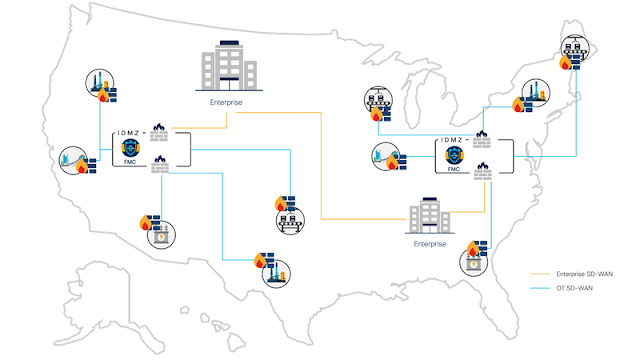As I prepare to head out on summer vacation, I can’t help but realize that planning a vacation is a lot like managing IT operations. Both require coordinating a handful of individual tasks (from booking flights and reserving a hotel to deploying servers and resolving issues and more). Luckily, just as online travel services have made vacation planning easier, SaaS tools also make IT operations easier. In a series of blogs, I’ll explore this comparison to drive home the point that any IT shop still using multiple tools—or worse, trying to manually coordinate multiple tasks—can make their life much easier by using an integrated SaaS platform like Cisco Intersight for hybrid cloud operations.
From Manual Travel Management to Online Vacation Planning
The first recorded instance of a travel management service may be in 1840 when Thomas Cook organized rail transportation and lunch for 540 people. Five years later he was managing travel services for 165,000 people. All with a pen and ledger. Back then it was the model for success.
Let’s fast forward to the age of the internet. The internet not only wiped-out pens and ledgers through digital vacation planning, but it also made way for a more connected world that puts the power of integrated vacation planning at our fingertips.
Online Isn’t Good Enough
Imagine you’re planning a summer vacation for your family. Your first challenge is finding the best flights to your destination. There are 18 major airlines operating in the US plus more than 40 smaller ones. You’ll have to search each airline site for tickets. Doing this 18+ times to compare and find the best flights gets overwhelming quickly. I’ll just leave it there because when you multiply the effort to search for lodging, restaurants, and activities, it becomes clear that the internet alone isn’t the key to efficient vacation planning.
A flock of birds take synchronized flight off the beach in Destin, FL.
Integration is Key
But you’re smart. You know that all you have to do is log on to your favorite travel site, like Tripadvisor, Kayak, or a handful of others. Integrated travel sites aren’t just about booking your vacation. You can get alerts, track deals, make changes, and get support…all from your fingertips anywhere in the world. That’s the power of an integrated SaaS platform.
The Power of Integrated SaaS for IT Ops
Now let’s bring IT operations back in. Running IT operations requires juggling multiple tasks to plan, manage, and optimize outstanding experiences while managing risk and dependencies. This means deploying servers and apps, monitoring system health, identifying and resolving issues, managing critical dependencies, configuring profiles, and driving collaboration, to name just a few tasks. Then multiply these tasks across your on-prem, hybrid, and public cloud infrastructure. It’s an incredibly complex and overwhelming responsibility with virtually no margin for error (somewhat like pleasing each family member who has a different view of the perfect vacation).
Simplify Hybrid Cloud Management with Cisco Intersight
What if there was an integrated IT operations platform that lets IT teams manage your hybrid cloud infrastructure in a few clicks from one place? There is! Cisco Intersight.
Like an integrated online travel service, Cisco Intersight:
◉ Integrates multiple tasks in one place:
◉ Deploy and troubleshoot your on-prem, public cloud, and edge environments, including physical servers, hypervisors, and VMs
◉ Evaluate workload and app performance and optimize in real time
◉ Build, deploy, and manage cloud-native Kubernetes clusters, and
◉ Provision on-prem resources for Infrastructure-as-Code deployments
◉ Provides value-added services:
◉ Customizing the dashboard to view your global inventory, fault monitoring, and firmware status
◉ Automating tasks for device configuration, OS installation, HCI cluster upgrades, K8 and infrastructure-as-code (IaC) deployments, and other routine tasks
◉ Creating and executing workflows across multiple infrastructure domains and cloud platforms
◉ Integrating with 3rd-party operations tools such as ServiceNow
◉ Automating workload placement, scaling, and capacity so workloads get the resources they need when they need them and you optimize spend
◉ Modeling capacity planning and migration scenarios to reduce risk and ensure predictable performance and cost
◉ Managing your entire infrastructure on the go from the Intersight mobile app
◉ Provides role-based experiences:
◉ Gives IT Ops a powerful tool to control every aspect of your environment and move faster with powerful automation capabilities
◉ Allows developers the agility and freedom they need to deploy applications even faster their own way – using the tools of their choice
Take Control
To wrap up, just like an online travel planning service lets you easily tame the many aspects of planning a vacation, Cisco Intersight helps you take control of your IT operations across your entire hybrid cloud environment. Intersight gives you one place to manage your on-premises, public cloud, and edge locations and all types of workloads (bare metal, VMs, K8s, and serverless). Its services make common IT operations tasks easier, give your DevOps teams the agility they need, and help you stay ahead of issues to optimize performance and costs.
Source: cisco.com

























